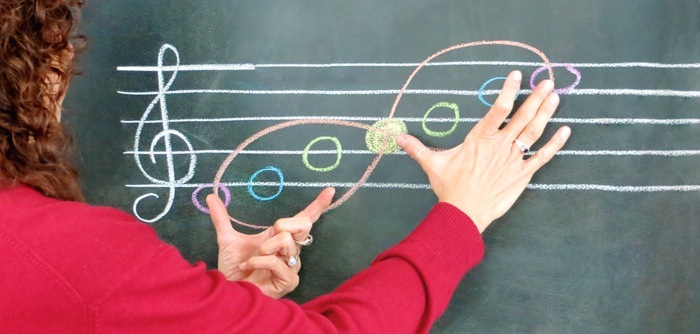
(What follows is a chapter in the new book, The Mood of the Fifth: A Musical Approach to Early Childhood – published by WECAN).
Editor’s note: As an experienced music educator, Andrea addresses the nature of the young child’s experience of the world and of music as described by Rudolf Steiner, and helps us to understand the distinction between pentatonic music and music in the mood of the fifth.
A technical note about tone indications: The notes of the pentatonic scale beginning on the D above middle C are indicated as d′ e′ g′ a′ b′ dʺ eʺ.
What is this mysterious thing called mood of the fifth? How is it related to the pentatonic scale? Is it the same thing? Why would we choose to use it with the younger child, and what stands behind it pedagogically?
These questions arise repeatedly among Waldorf kindergarten teachers, class teachers, music teachers, students in teacher training centers, and those who choose to home-school their children. In fact, I find that mood of the fifth, which diverges so widely from the more familiar mainstream approach to music education, is the most misunderstood aspect of Waldorf music education. Although the concept of mood of the fifth actually arises out of very specific indications given by Rudolf Steiner, it can be difficult to find much written about it.
The very nature and experience of mood of the fifth is something that lives naturally in the truth and reality of the young child, but no longer lives in the same way for the adult. Adults can find it challenging to understand and appreciate, because we can no longer be the young child, and can no longer experience things as the young child does. So, we must turn to study and research, and discover what Rudolf Steiner has to say about the young child’s developmental stage of consciousness. Then we can enrich this study with our own experiences in bringing music to young children.
As in all of the Waldorf curriculum, we strive to meet the children at their particular stage of development in the most appropriate and soul-nurturing way, guided by our understanding of the importance of this developmental approach. This holds true for every aspect of early childhood work, and, with older children, for every subject, both in main lesson and in the special subjects, including music.

The full text of this chapter is available for AWME members only: join AWME here!

Sorry, comments are closed for this post.